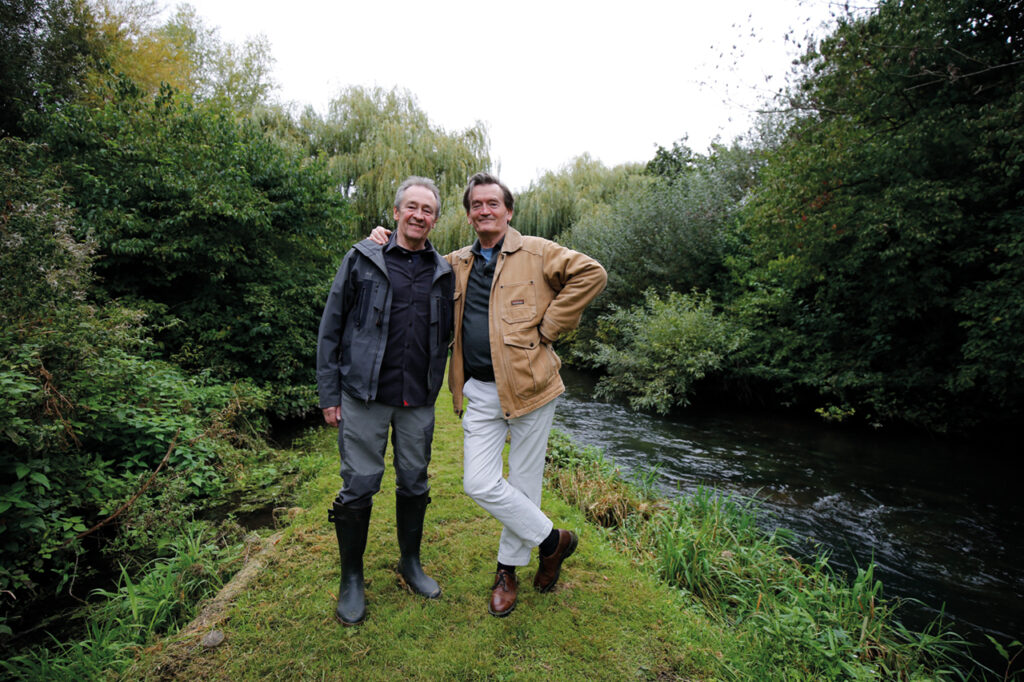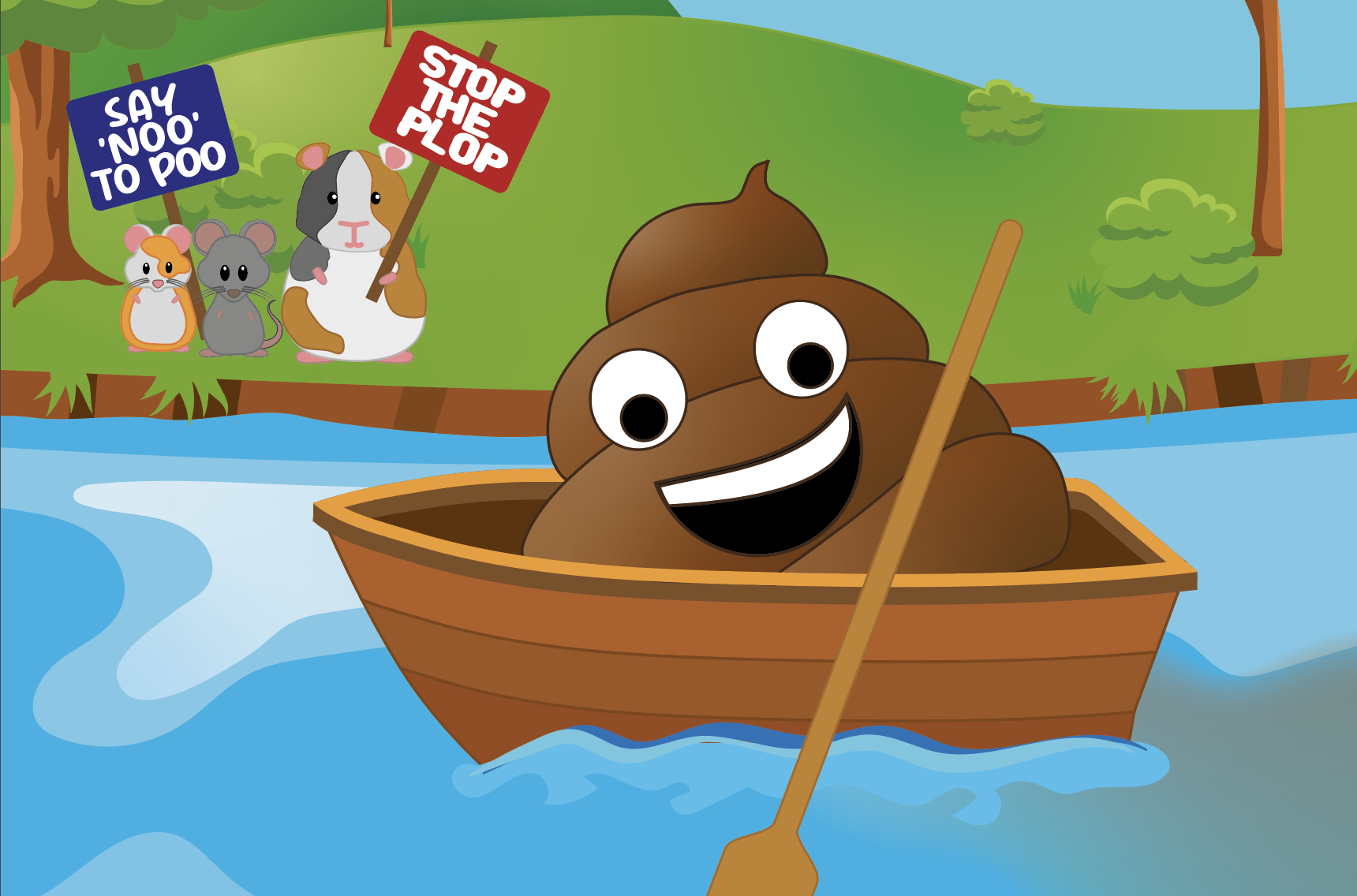Top of the poops
Privatisation of water in the UK has resulted in soaring bills and sewage-filled rivers. How did we get here and how do we change course
People used to swim with their heads high above the water because they lacked confidence or wanted to protect their hairdo. Now they do it so that they don’t swallow shit.
If you like to swim, fish, dive or paddle in your local river, and you live in the North of England, think again. Seven of the 20 most polluted rivers are in the region, managed by United Utilities and Yorkshire Water.
If you have children, and those children share the age-old fascination with all things watery, then you’d better start thinking about overseas holidays – because your local rivers and, as a consequence, beaches could be dangerous for their health. The once feted ones down south are now more likely to be fetid.
“Rather than investing in sewage treatment, water companies pay out large sums to shareholders and executives.”
Our rivers are always in the news right now. Activists like Feargal Sharkey and George Monbiot have been tireless protesters of their pollution, but other familiar names are getting involved – as are national media. Ray Mears is backing the New Scientist and I newspaper’s Save Britain’s Rivers campaign. In the recent BBC documentary, Our Troubled Rivers, comedian and angler Paul Whitehouse lamented the state of the Wharfe.
The reason water matters so much is because it is everywhere – especially in the North, where Atlantic fronts offload and the Mersey and Ribble, Tees and Tyne, Ouse and Calder compete with motorways as they cross moorland and plain, vale and dale. Water comes down as rain, flows along canals, streams and rivers, settles – or not – in farmers’ fields, reservoirs and lakes, travels to the coast, estuaries and beaches and out to sea – where the cycle starts again.
The region’s raininess has consequences. “Climate and weather patterns are certainly factors which can increase the risks of pollution from land runoff and also waste water discharges from combined sewer overflows,” says Nigel Watson, professor of geography and environmental management at Lancaster University.
“The rainy and wet environment of the North West does not help. But the problems are also related to the types of human activity – including lowland and upland farming, which can contribute pollution from animal waste and also nutrients from fertilisers which are not taken up by crops.”
Run-off from agriculture is the biggest single polluter of rivers, responsible for 40 per cent of damage to waterways, according to the Environment Agency. Eutrophication is the scientific term for the blue-green algal blooms created when nutrients like nitrogen and phosphorus are deposited by run-off and destroy the natural ecosystems of watercourses. It reduces aquatic oxygen levels, which affects fish numbers.
This combines with sewage from waste treatment sites and, in some areas waste from septic tanks. Our most revered and romanticised bodies of water are as filthy as rivers that flow through industrial areas. In 2022, conservationist and zoologist Matt Staniek said Lake Windermere was on the verge of a “catastrophe” due to blooms resulting from sewage, homeowners and holiday lets emptying their septic tanks and run-off from farming land and animals entering the water.
Not a single country in the EU has managed to meet the environmental objectives of its Water Framework Directive, which came into legal force in 2000.
“The difference here is that we have private water utility companies and there is a mindset that says we should be getting a really great service from these companies who are contracted by government and the regulators to do this work,” says Watson.
“People are perplexed when they are struggling to keep up with their water bills – which are high compared to other developed countries – and yet at the same time the water companies and the water sector as a whole seems to be failing.”
Water bills rose by 40 per cent in real terms, according to the National Audit Office, between 1989 – when the state assets were privatised – and 2014-15. On the upside, the quality of public drinking water in England is better than it was 30 years ago. Problems with industrial pollution have also been tackled, although that’s partly because all the factories were closed by the same Thatcher government that sold off the utility firms.
Water privatisation was intended to replace regional water boards – which were both poacher and gamekeeper – but three monopolies control the North’s rivers and reservoirs, and their corporate structures mean their owners are remote, obscure figures and firms that have little or nothing to do with the places where they make all their profits.
United Utilities’ principal shareholders are investment firms including US-based BlackRock, Lazard, Vanguard and Legal & General. Saltaire Water, which runs Yorkshire Water, is made up of Citigroup Alternative Investments, GIC Special Investments, a Singapore state investment vehicle, HSBC, and Infracapital Partners, part of insurance group Prudential. Northumbria Water is owned by Cayman Islands-registered Hong Kong-based conglomerate CK Hutchison Holdings and property developer CK Asset Holdings.
In a report from 2020 academics from Greenwich University argue that current regulation is too generous to the water companies. “On average, over the past ten years, water and sewerage companies have paid over £1.8bn per year in dividends [to shareholders], which equates to about £75 per household per year. This is an expensive way to finance infrastructure,” they wrote.
Michael O’Connor, campaigns officer at We Own It, says government and utility firms’ claims that things are substantially better post-privatisation are self-serving spin.
“Not a single one of England’s rivers meets the government’s own environmental standards. England and Wales are the only countries in Europe in which water supply is entirely in private hands.
“Rather than investing in sewage treatment and service improvements, water companies choose to pay out large sums of money to shareholders and executives. Although water quality has improved since the 1980s, this can be attributed primarily to improved regulatory standards.”
Raw sewage was emptied into UK rivers just under 300,000 times last year. This was down from 372,000 in 2021, but the reduction was largely due to drier weather. Water firms say sewage is dumped in rivers when heavy rains – which Northern England has had since forever – threaten to cause overflows, and there’s a risk of waste backing up into houses. Campaigners say releasing untreated sewage is common practice.
“Any reduction in the number of sewage discharges is welcome, but this does not disguise the fact that water companies across England are still routinely dumping colossal amounts of sewage in our rivers and coastal waters,” says Jamie Woodward, professor of physical geography at the University of Manchester.
“It degrades precious ecosystems and poses a danger to public health. The latest figures reveal over one million sewage dumps in the last three years. And each discharge is a toxic cocktail of many pollutants including microplastics and pathogens.”
Nor, he says, should we trust headline figures.

“It’s important to appreciate that the data only tells us about the number of discharges and how long they last. The most heavily polluting overflows should be calibrated to provide data on the volumes of wastewater dumped in our rivers.
“You can reduce discharge frequency and duration but still increase the volume of sewage dumped. We can’t measure industry improvement with any confidence with faulty metrics. Regulation of the industry is still failing. We now know that permit breaches on storm overflows actually increased last year – in fact they more than doubled. Fly tipping of sewage and environmental degradation was business as usual across the sector in 2022.”
Watson cites “decades of underinvestment, weak regulation and oversight, lack of management and technical capacity” as key factors. “There’s perhaps also a somewhat arrogant attitude in the water sector where some professionals have been dismissive of public knowledge and public concern. The issue of underinvestment is going to take decades to fix and new funding mechanisms are going to be needed. On the other hand, taking unfair and unjust advantage of rules which state that untreated sewage can only be discharged in truly exceptional circumstances – that is something that could be stopped now.”
Climate change, which is already causing more extreme weather patterns, combined with other environmental stresses, is exacerbating the problem.
“Water companies have found it hard to deal with drought followed by intense rainfall and flooding – one followed by the other has impacts for sediment erosion and delivery to freshwaters,” says Pippa Chapman, professor of biogeochemistry at Leeds University.
“Across Europe there are water quality issues, with climate change leading to low water flow in the rivers and then pollution is not diluted as much. This can cause issues such as eutrophication, which was a big problem last summer.
“Also, all areas are suffering from an increase in microplastic pollution and emerging contaminants such as pharmaceuticals.”
The remarkable thing about the current sewage scandal – and the reason it’s in the news – is that it has been exposed by local campaign groups, such as the Ilkley Clean River Group and Windrush Against Sewage Pollution, and by university researchers. It was not exposed by the Environment Agency, which is responsible for flood management, regulating land and water pollution and conservation, or Ofwat, the quango responsible for economic regulation of the privatised water and sewerage industry in England.
“They have been sleeping at the wheel,” says Woodward. “The public can take heart from the fact the campaigning and citizen science can make a difference. University research can make a difference. The remarkable transformation of the Mersey basin in the 1990s shows what is possible. The tragedy here is that we are having to start again in many rivers, and we have learned little or nothing from that experience.”
For We Own It, renationalisation is the only solution.
“There are at least two ways water could be brought into public ownership,” says O’Connor. “First, the government could compensate water companies’ shareholders. It can decide what qualifies as a fair level of compensation.
“Second, the government could take water into public ownership without compensation. The courts have ruled on numerous occasions that this is legal. There is no right to be compensated for failure. And shareholders have already benefited from years of dividends.”
Labour leader Keir Starmer has accused the government of “turning Britain’s waterways into an open sewer”. The alarming number of spillages – 1.75 million hours of shit flowing into rivers and onto coasts in 2022 – has led for calls – from Lib Dem leader Ed Davey, among others – for the environment secretary, Thérese Coffey, to resign.
The only real hope lies with campaign groups. The aforementioned organisations, along with Greenpeace, River Action, Surfers Against Sewage* and the Rivers Trust, are a powerful united front against the likes of United Utilities. People power might just win on this one, because rivers are not only about safe leisure or clean drinking water or fish and fowl. They are also about a sense of place. Like the air, we instinctively know that water is a gift from nature and we all own it and must assume responsibility for it – because no one else will.
*You can read a piece by Amy Slack of Surfers Against Sewage in the Comment section of bigissuenorth.com

Leave a reply
Your email address will not be published.